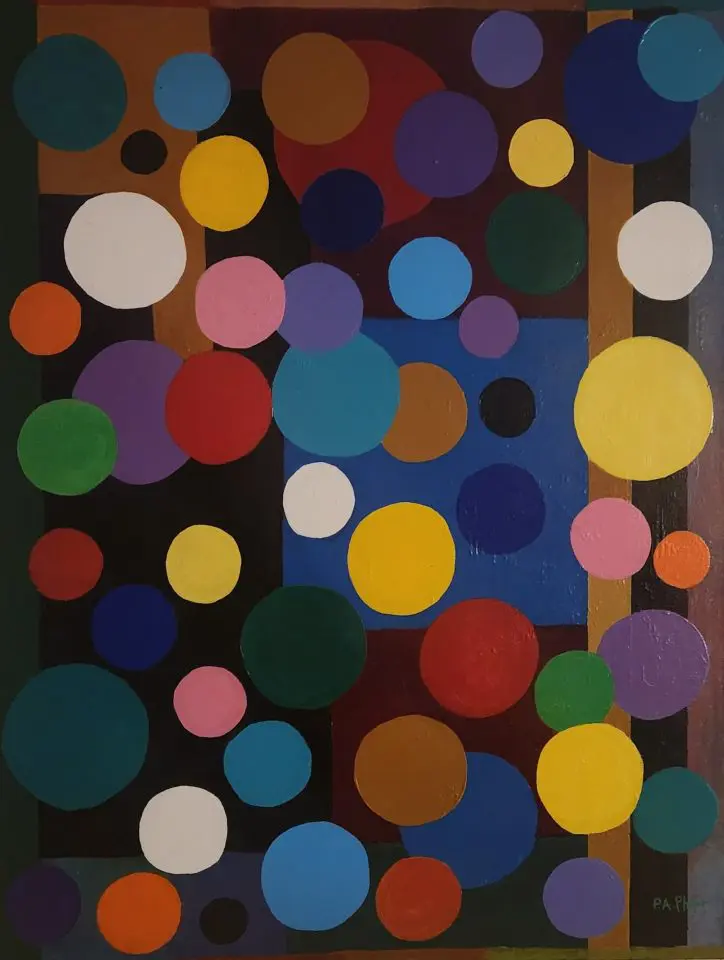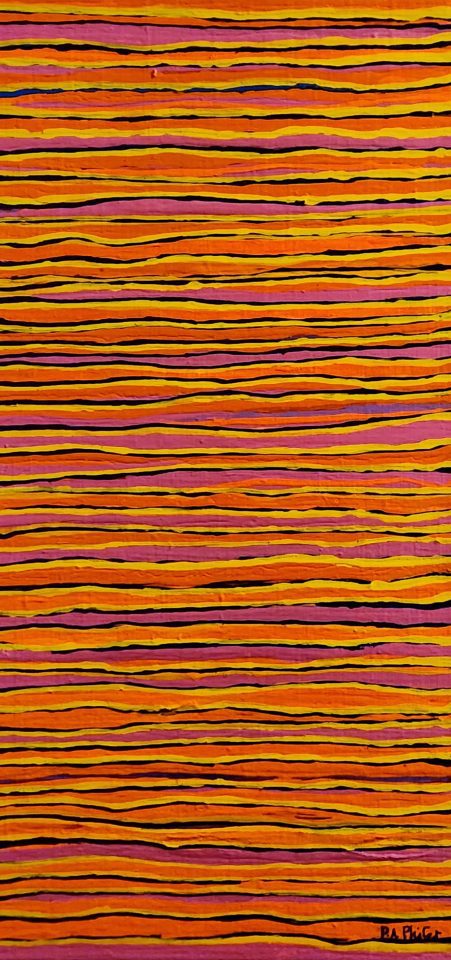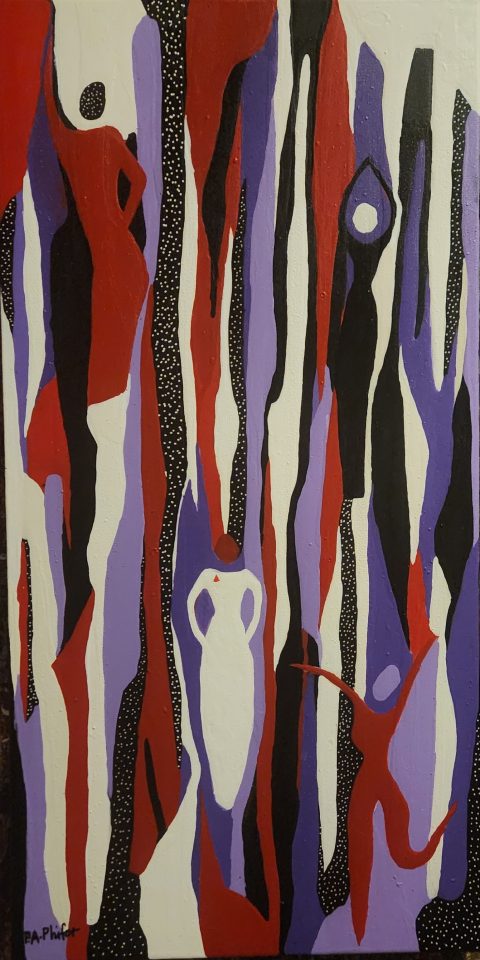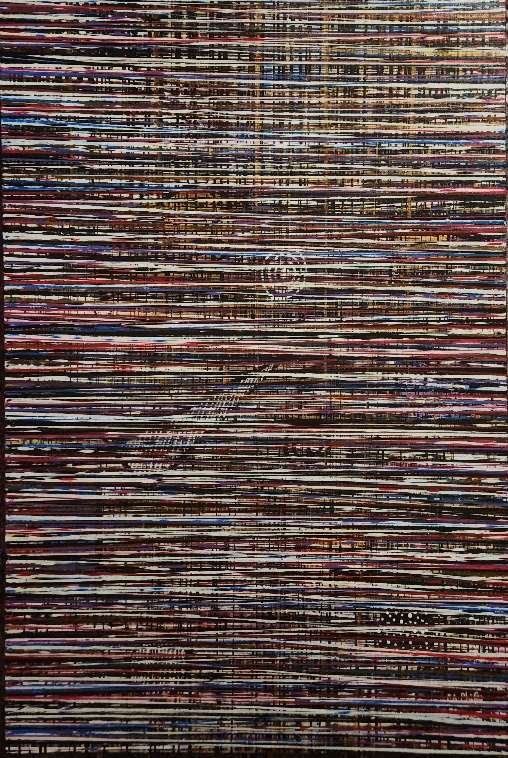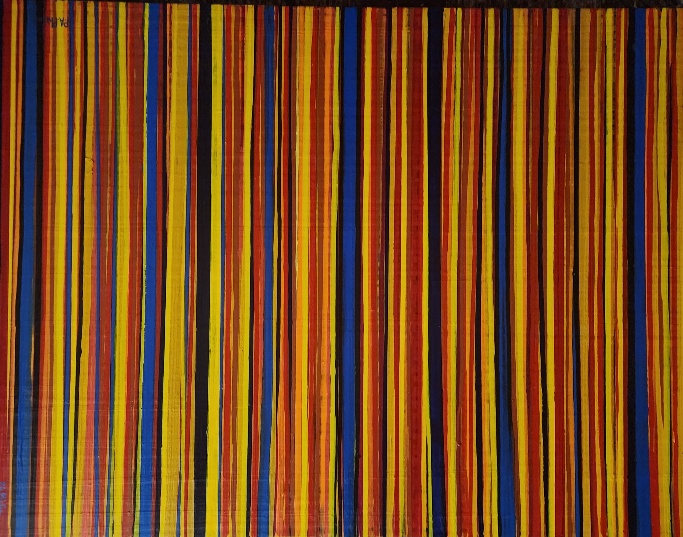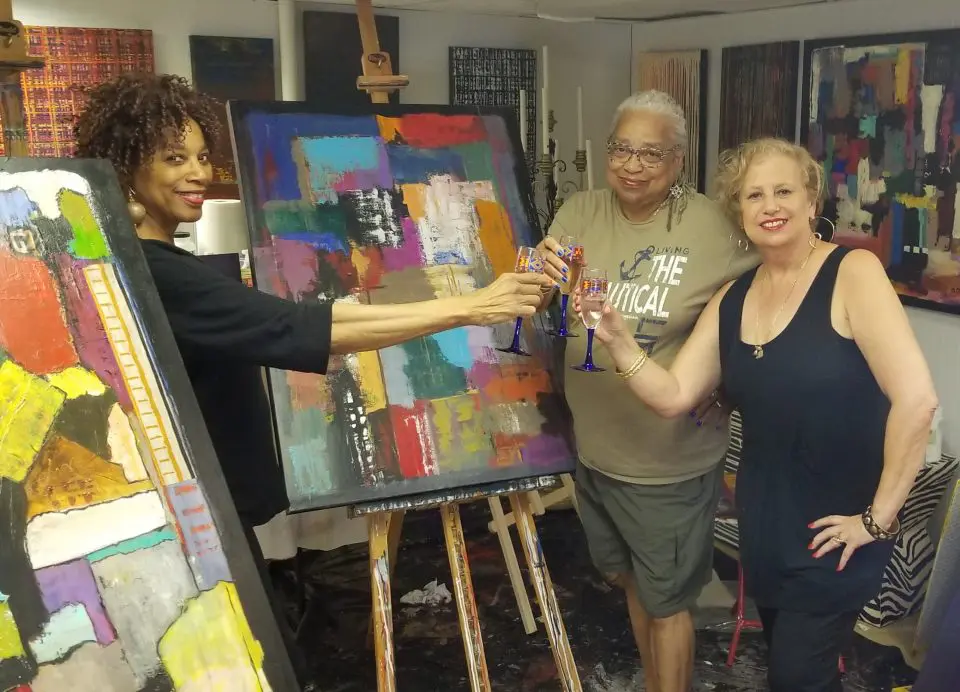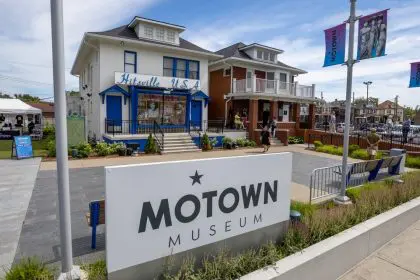
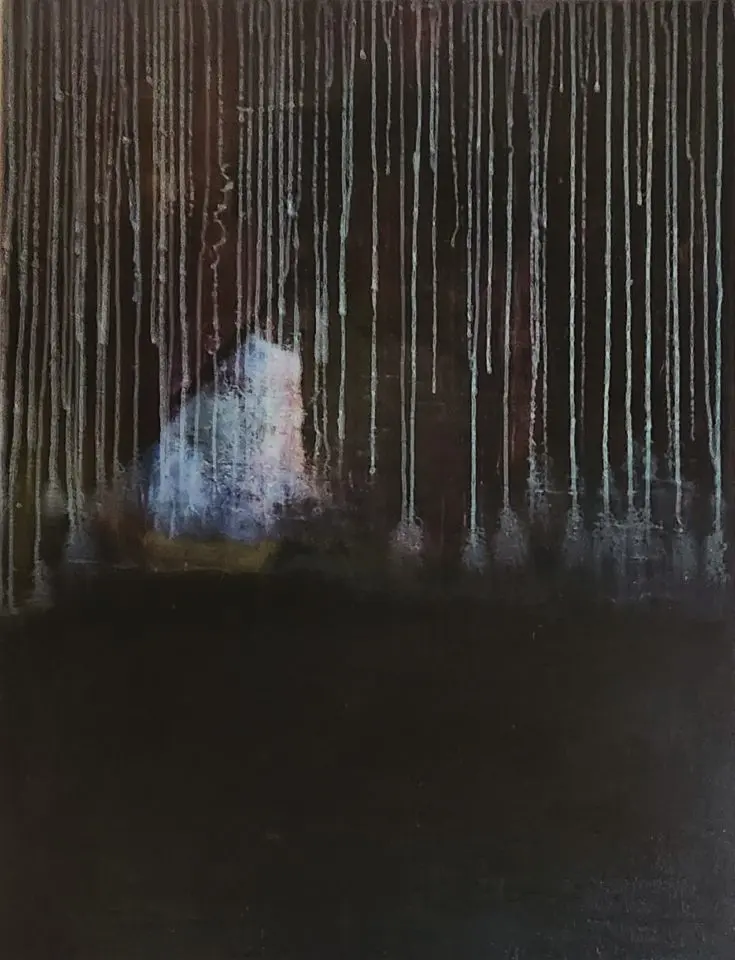
DETROIT — In a city known for its resilience and reinvention, 80-year-old Priscilla Phifer embodies Detroit’s spirit of transformation. Ten years ago, at an age when many contemplate retirement, Phifer launched her career as an abstract artist after a family challenge to transfer her decoupage skills to canvas.
Her unexpected artistic emergence culminated in a startling debut: 26 of 30 paintings sold at her first exhibition when she was 70. This month, Phifer celebrates her 80th birthday and tenth anniversary as a professional artist with her fourth solo exhibition, opening May 18 at Detroit Design Center in Midtown.
The retrospective showcases works spanning a decade of artistic evolution, including her acclaimed “If Women Ruled” series inspired by politics and social issues. These controlled acrylic pours honor notable women including Vice President Kamala Harris, Supreme Court Justice Ketanji Brown Jackson and former first lady Michelle Obama.
You’re coming up on 10 years as a professional artist, meaning that you emerged as an artist at 70. Tell us about your artistic background and what led you to becoming an abstract artist
Prior to becoming an artist, I was dabbling in decoupage and floral arranging. Actually, I was teaching decoupage at the Grosse Pointe War Memorial, Plymouth Church, and at their summer camp after-school programs in Southfield. I was having a good old time doing floral arrangements. I love it. One day the men in my life, mainly my husband and son and my late daughter-in-law challenged me, after doing decoupage for about five years, and said, “You know what? I bet you could transfer those skills onto a canvas. Let’s find you a class.”
They found a class at the Birmingham Bloomfield Arts Center, but it was the wrong class.
I thought it was a beginner’s class. It was a studio class for people who needed that space as a studio because they didn’t have space at home. I walked in with these two little canvases because they said, bring two canvases. And the class was supposed to be from nine to twelve. I walked in with these two little canvases and the class was from nine until four. Every week for eight weeks.
I was a glutton for punishment. I did learn a little bit, although I didn’t learn how to draw or do figurative work. But I kind of looked around to see what people were doing, and some of them were doing some dripping and dragging and stuff like that. So I said, “Oh, I can do that.” Because I don’t have that formal training in terms of drawing and figurative work and modeling still work, I figured I would just stick to abstract.
After I got into it, I said, “Oh, let me see who else does abstract.” Even before I got into it, I really liked Sam Gilliam, but also learned in an intro art class about Jackson Pollock and Rothko, and the European artists. So I decided to explore and see what other influences I might like, other artists I might like. I actually like abstract. That’s how I got there. I went from decoupage and floral arranging, to visual art.
I know that table settings have been one of your art forms really for a long time as well
Tablescapes. I do that. Yes, I do, and I have even entered into competitions for tablescaping and I have won a couple of times.
You came into abstract painting really with a lot of sense of color, design and composition, which definitely comes through in your work. Can you tell us about some of the different groups of paintings that you’ve created?
Yeah, “If Women Ruled.” That was inspired by politics. Let me back up. A lot of my art is inspired by politics and art collecting. A lot of it’s about politics and social issues.
“If Women Ruled” was my first series. I did it in January 2020, following the loss of the Presidential election. I was so hurt over that. So, my first thought was, “Dang, if women ruled the world, how would it be? I wonder if it’d be much better than when men have been ruling it all along. How would it be?” That’s how I came up with the title and the concept.
And that particular series has taken off so big. I mean, I had to keep up with those, because it’s not my traditional way of blast painting or drip or dragging. I actually call it controlled acrylic pours. I use a tiny little instrument to pour paint into each little section, randomly at first.
Who are some of the women you’ve honored in this series? I know different paintings are named after different women
Early on they were numbered. When I went to a gallery, we started naming them after notables on the local, national, and international level. On the local level, one was named after Deborah White Hunt of Detroit Windsor Dance Academy. Others were named after Kamala Harris, Ketanji Brown Jackson, and Michelle Obama.
I’m doing one for Daisy Elliott. Do you know who she was? She was a Michigan State representative who co-sponsored the Elliott-Larson Anti-discrimination Act. She died about 10 years ago. So one’s going to be named after her. It’s ongoing.
I’m doing some for The Deltas. The one you see, with the red, crimson and cream, black and purple—that’s a Delta series. And now people want a print of it, or they want an original. So I’ve been busy doing originals, and I’m going to do a print for the Southfield chapter. As a result, I have been busy.
It is exciting. A lot of times, my art is collector-driven. It doesn’t start out that way, but as a collector-artist, people tend to want the same thing. If one collector wants “If Women Ruled,” the others have to get it, too. For example, the “For Gilda” series—one person wanted it from my little group of collectors. Well, they cannot be outdone, so all of them have it.
I know you did a mural at the Detroit Windsor Dance Academy, and I know of at least one other mural that you’ve done. Tell us about those mural projects
The one for the Detroit Windsor Dance Academy was done specially for their 40th anniversary. Forty years of being in business. Isn’t it wonderful? So they wanted different artists to participate by doing a mural on their partitions, which were six feet by nine feet, so that when the students, from ages 5 to 90, are practicing, they have something beautiful to look at.
So yeah, I did that. It was like a three-month project. I did that one and the one in Highland Park for a retired politician concurrently. I would do like six, seven hours in Highland Park, then come home. Then I’d do six, seven hours on the one for the Windsor Dance Academy.
What’s so different about those two is normally my paintings are done on the floor or on a table. I couldn’t do these murals on the floor. And because the panel was so big, I actually used a brush on those two. On my other works, like the crimson and cream black one you see back there, I don’t use a brush. That’s the controlled acrylic pour technique, as I call it. All acrylic.
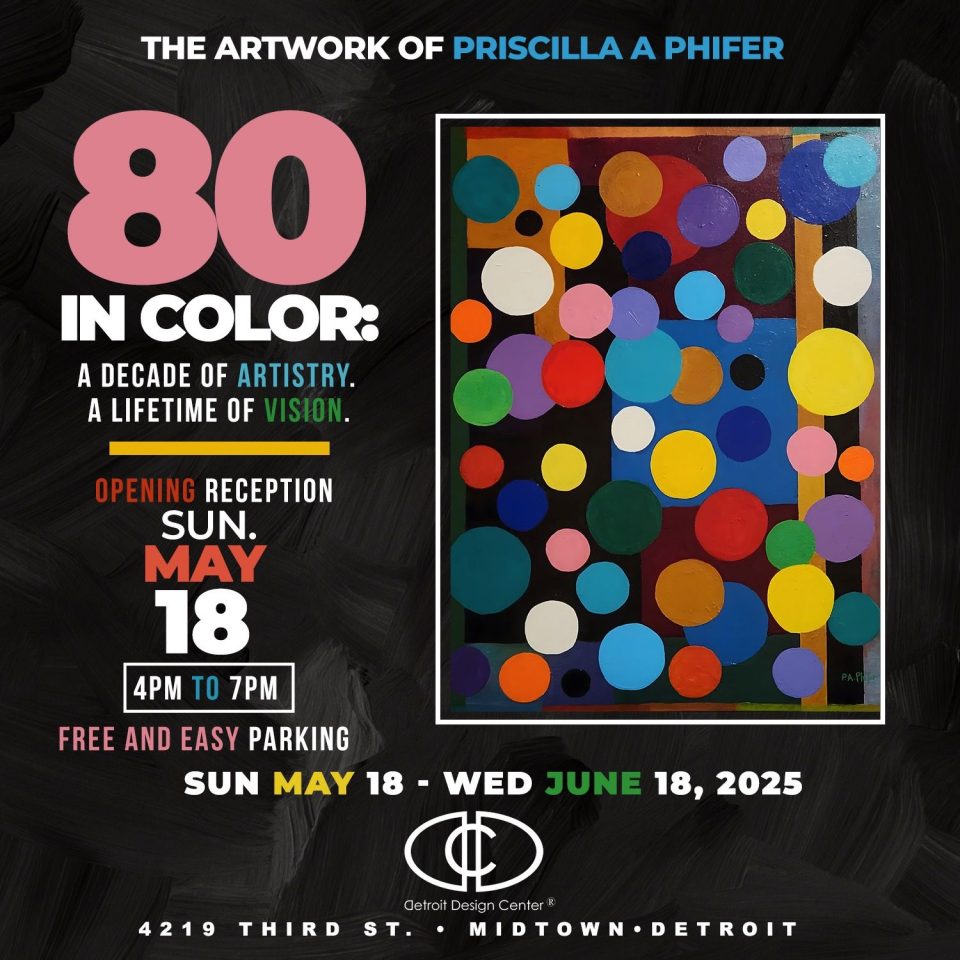
Speaking of community service, I know that you are very involved in different organizations and philanthropic activities. Can you tell us more about some of those engagements?
I work with nonprofits, mainly 501(c)3s, helping them find artists to do auctions so they raise funds for their various programs. I’ve worked with Matrix Human Services, Torch of Wisdom Foundation, the National Conference of Artists, and a few more.
But what I do, in terms of community service and art, whenever there’s an opportunity for artists to participate, I grab them. I make them aware of these things, and the importance of sometimes not even getting paid for the art, but most of the time they do get paid for the art at these auctions.
But in the case of Matrix, for example, it was an outright donation, and initially the artists would say, “Oh, I don’t want to do that. I don’t get paid,” because at the Detroit Fine Arts Breakfast Club meetings, the artists sell their work. They expect to get paid. They want to get paid for everything. So I used to tell them, and I continue to tell some: It’s not always about the money. Sometimes you just gotta give, in order to get, but sometimes just to give. You get another exposure market.
So that was a challenge at first, trying to get artists to just donate certain items. But now, they understand the importance of giving like that. And I’ve told them that they would be considered philanthropists. That was philanthropy. So, that was one organization I worked with. But for the most part, I would help 501(c)3s fundraise through art and their art programs.
You have a lot of energy and you create so much art. How do you do it?
Yeah, I’m asked that a lot. “How do you do that?” I don’t know. I even asked my doctor, “Am I normal?” I rarely ever get tired. And I usually get about six hours of sleep. I think it’s art that keeps me energized. It might be genetic, too. Some of it’s genetic, and my father was very energetic. My parents, both of them were energetic, and they were into arts and crafts and stuff like that. So I think I got it honestly from them, and my grandparents.
Have you incorporated decoupage in your abstract work at all? And for those who don’t know, explain what decoupage is
Decoupage is basically a French term which means to paste paper onto another object or paste something onto another object. Usually paper.
Early on, you know who has my heart? My son Drake. He has pieces with decoupage and paint. Yes, he has a very big one, 30 by 40 or 33 by 43. It’s a huge one. It’s in his bathroom, and two or three others.
I do it too. Let me show you one. This is one. This is paint. See that? This is all paper. And embedded in there are messages that you have to go look for. They’re embedded messages you can’t see, like this one has “unity” and “perfection.” Messages are embedded. This is paper and paint.
Now this happens to be on a canvas, but I did some on canvas that all sold. I did one in the shape of a pyramid. But you know who got that? The Deltas got that one. And a circle. Geometric shapes.
What I didn’t understand until I started working with paper is that paper stays wet a very long time. It takes a long time for the paper to dry, so you can’t really put another layer of paper on until the first layer dries. Very time consuming, but it looks like it’s an easy thing to do. It is easy, but it’s just time consuming.
One thing we didn’t get to talk about is your wonderful book, Hue Intuition. Tell us a little bit about the book
It’s no longer available. There were two printings. They both sold out. Actually, that was Drake’s idea to do that book. I was told by one of our mentors, a mutual mentor, “You don’t need a book right now. You haven’t been an artist long enough. You might change your mind about what you want in the book.” But the way that book happened, Drake and his late wife started that book—they wanted to do this book. That was their idea.
Monique passed away in August of 2018. So after a few months of mourning and sadness and all that, Drake woke up and said, “Mom, we’re gonna finish that book. Monique would want us to finish that book.” So that’s what we decided to do. But then the pandemic hit.
Initially, Drake was sending photographers to the various collectors’ homes. Then, when the pandemic hit and people had to wear masks and things shut down, we relied on people to send their best photos, whether it be a selfie or some other kind of means. They got their art that they had collected from me, and a picture of themselves alongside it. So that’s how we put that book together. I call it a community book because the community had to get involved. I like the outcome of the book, and it was fun doing it. And what was especially nice was featuring the collectors.
Tell us about the big 80th birthday and 10th anniversary event
Well, I tell you, I meet a lot of different people doing community service. One of the Community Service activities was, I am the Southfield Public Arts Commission’s liaison, and through that commission I met these Nordin Brothers. They’re awesome. They provide or they’re installing sculptures in Southfield. So, anyway, the Commission went down and the mayor went down to their studio for a visit, and we got to talk about art and sculpture and all that stuff. And then they said, “You know what, you might want to come down and have an exhibit,” and I’m looking around going, all this being a lot of sculpture, right?
I saw some paintings, and I thought they were mine. Really, I said it looks more like my work, my style of work. That was one of the wives of one of the brothers. But from that conversation about “you might want to have something here” — this was over a year ago — I went down to the studio with, like I said, the Commissioner and the Mayor, and fast forward, I got an email saying, “It’s time to get that show on the road. We want to do this for you, your 80th and your 10th.”
It’s going to be at the Detroit Design Center. The brothers are Israel and Eric Nordin. And they are fabulous sculptors. I tell you, they do a lot of metal, steel.
It’s gonna be separate. They have a new gallery, so my exhibit will be the inaugural exhibit. And it’s beautiful. Randy, Drake, and I went down there Sunday. We’re all excited, really are.
It’s gonna be May 18th, four to seven. It’ll be my 4th solo show. All of my solo shows have been on a Sunday.
Are you creating new work for the exhibit?
Not all new work. I have some older work and new works. It’s not a retrospective, but it’s just a window into what I’ve been doing over the past 10 years.
I have about ten new pieces.
What have been some of your most memorable moments as an artist in these past 10 years?
The most memorable is my first little show. That was very memorable. To show you that I was not a lifelong art dreamer… so anyway, after I finished at Birmingham Bloomfield Arts Center, I went to the Community House to see if what I had created or started creating and continued at the Birmingham Bloomfield Art Center and then at the Community House was worthy enough for an exhibit. So I had my Community House instructor critique 30 paintings.
And I’m thinking that she’s going to tell me, “Oh, you need to do this. You need to do that,” because, like I said, I had no training. I’m self-taught, right? She kept saying, “Sign your name on all of them.” I’m not thinking that I’m an artist for real. Even the day before the event, I’m thinking… I didn’t have a smartphone, no sales receipt book, no change. I think all we had was a price sheet in the event that one or two pieces would sell.
That was our expectation. Anyway, people started lining up, like three people wanted this one piece, and two people wanted that piece, and it’s like, “No, I want it.” Lo and behold, twenty-six of those thirty paintings sold. And before I even got to the sales, I said, “How am I gonna do this? I don’t know how to process anything. I’m totally unprepared.” Drake saved the day. He processed everything through his business.
Other than that, I don’t know what I would have done had he not been there. Might have grabbed somebody who had a cell phone and a Square. Right after that, Drake said, “Mom, you’ve got to get a smartphone.” I said, “Why do I need a smartphone? Nobody calls me.” I didn’t understand. I credit my son with so much for helping me in this business. He’s one of the biggest helps, in so many ways.
That was a memorable moment, and another one was when I received the top honors for one of my “If Women Ruled” paintings, named after Ketanji Brown Jackson, at our town art show and sale in Birmingham. And then doing those murals. I love doing those murals. I mean, it was so rewarding to do those murals.
Thank you for sharing your artistic journey with us
Well, thank you, and thank you Rolling Out for this opportunity. Two of my favorite people. You all know that, right? Yes, you are, you know you are. Thanks. Mutual Adoration.
The exhibition celebrating Priscilla Phifer’s 80th birthday and 10th anniversary as an artist will be held on May 18th from 4-7 pm at the Detroit Design Center, 4219 3rd Street in Midtown Detroit. The show will remain on view until June 12th.
